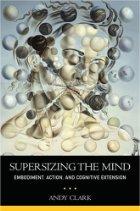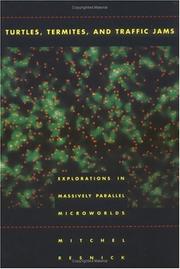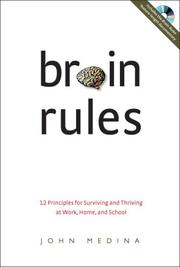Supersizing the Mind: Embodiment, Action, and Cognitive Extension - Andy Clark - ISBN 0195333217 - Oxford University Press - 2008
note that this was finished much earlier but without recall, recall starts a month before the current date to already start with very spaced recalls
Motivation
Read previous paper in Where brain, body and world collide, Clark, Deadalus, 1998 for the SC02 seminar in Iceland (2005).
Pre-reading
- What difference with his previous work?
- Is he using the same "extended" mechanism as Cziko?
- Is he referencing and how does it relates to
- Maturana/Varela - Enaction (Varela, F., 39, 169, 193, 234, 252 - Maturana, H., 16)
- Brooks - Embodiment (Brooks, R. A., 15, 18, 141, 153, 234)
- Campbell - Evolutionary Epistemology (Campbell, D. T., 246)
William Ross Ashby (Intelligence Augmentation) / Cziko (extended Bernard) / Hofstadter (distributed loops/entwinement cf I am a strange loop)
- How is it exploitable? How do it "extends" my own current work with Seedea?
Skimming
Main hypothesis : cognition isn't limited to the physical brain material (skull) but extends to the surrounding environment instead of merely using it as a support
- "active externalism, based on the active role of the environment in driving cognitive processes" p220 and from The Extended Mind, Andy Clark & David J. Chalmers, 1998
- the original paper that gave rise to book
Process :
- offering an englobing simple name for his central thesis (EXTENDED)
- opposing it to another (BRAINBOUND)
- then proposing sequentially several concepts to reject them and refine the central thesis
- HEC = Hypothesis of Extended Cognition (first appearance p112)
- HEMC Hypothesis of EMbedded Cognition = (first appearance p112, added value explicitly discussed p136)
- HOC = Hypothesis of Organism-centered Cognition (first appearance p139)
Introduction : BRAINBOUND Versus EXTENDED
- excellent start with Feynman/Weiner exchange
- ďNo, itís not a record, not really. Itís working. You have to work on paper and this is the paper."
- description of the 2 opposing view
- a trapped mind in a body in an environment
- an intricate system in which cognition goes beyond the mere neuronal substrate
Part I - From Embodiment To Cognitive Extension
- 4.9 BRAINBOUND Versus EXTENDED: The Case So Far (quick sum-up of the 4 previous chapters) rewritten as :
- organisms exploit their entire body for action and cognition to minimize energy usage
- direct task cognition is optimized by using small scale local links instead of building a complex global picture
- duplex flux of information for constant adjustment (enaction loop) and not complex information gathering
- inclusion of physical tools directly within cognitive processes
- usage of symbols to allow more complex problem-solving processes
- exploitation of spacial abilities to minimize cognitive load and the use of epistemic actions
- external memory artifacts
Part II - Boundary disputes
- 6.9/6.10 -> cybernetics? enactions? functionnal programming?
- 6.11 -> I am a strange loop by Hofstadter?
- ...
Part III
New concepts (try to attach examples in order to improve memorization)
- Principle of Ecological Assembly (PEA) (p13): the canny cognizer tends to recruit, on the spot, whatever mix of problem-solving resources will yield an acceptable result with a minimum of effort.
- Epistemic actions (p71): Actions designed to change the input to an agentís information processing system. They are ways an agent has of modifying the external environment to provide crucial bits of information just when they are needed most. (quotring Kirsh and Maglio)
- hazard function of the response time (RT) distribution during problem solving (p72): a measure of the instantaneous probability of completing a process in the next move. In engineering, this is also known as the intensity function.
- deictic pointers (p?): ? (basically relative links instead of absolute description)
- used with the example of visual problem solving (eye tracking and game of squares)
- transient extended cognitive systems (TECSs) (p158): transient creations, geared toward a specifi c purpose (doing the accounts, writing a play, locating a star in the night sky), and combine core neural resources with temporary add-ons such as pen, paper, diagrams, instruments, and so on.
Ideas inspired by the reading
- affordance tree (also inspired by my Seedea:Content/Conceptstree
 )
)
- allowing each user to create order his affordances
- in order to generate a social cognitive scaffolding, each affordance being a part of the scaffolding
- potential use could
- affordance monitoring (having a an alert when a new affordance in your field appears)
- bootstrapping domain discovering (quickly being able to grasp the key concepts)
- Different from the Wikibot network feedback mechanism
 because the cognitive processes are not necessarily code and is entered by the user.
because the cognitive processes are not necessarily code and is entered by the user.
- Cognitive locii
- chapter 6.5 regarding location and optimization seems to resonate with the cloud-market auto selector
- experiment on cognitive coupling using frustration as a measure
- can frustration as consequence from low reliability or access time with a tool be used a measure of embodiment/extension?
- is it the same frustration encountered with "tip of the tongue" experiences?
- could it also be used regarding other lacks including social phenomena? Missing someone?
- cf Low-quality network copping mechanisms

- the mind is just the network of matter, as physical units, we have the cheapest, or least amount of energy required, control of
See also
Categories
Back to the Menu
Other read books linking to the Supersizing the Mind page :
Back to the Menu
 Fabien Benetou's PIM
Fabien Benetou's PIM









